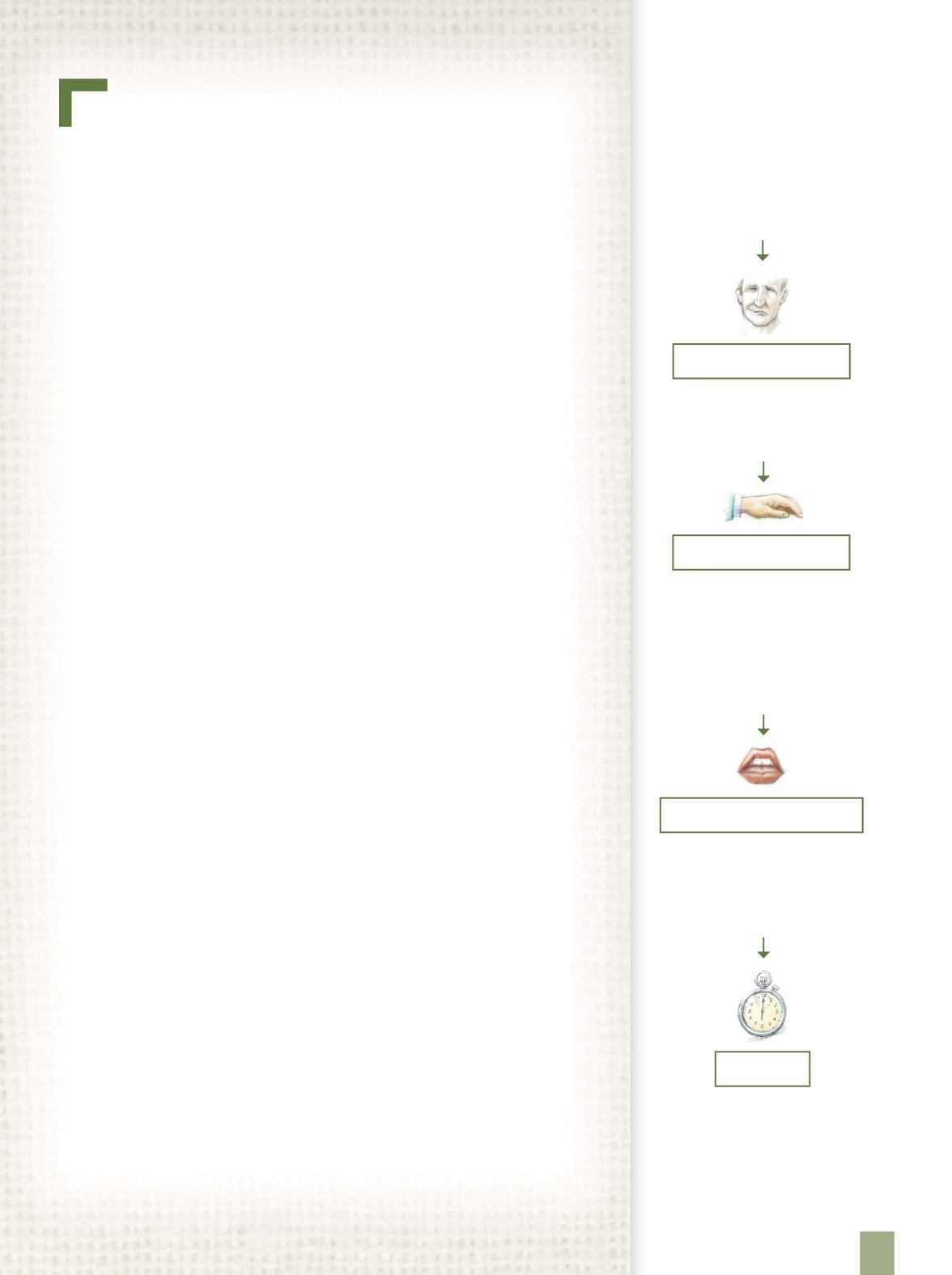
F.A.S.T. is a method
used to assist with quick
recognition of stroke
symptoms.
F.A.S.T.
F
ACE DROOPING
Ask the person to
smile. Does one side of
the face droop?
A
RM WEAKNESS
Is one arm or one side of
the person’s body sud-
denly numb or weak? Ask
him or her to raise both
arms. Does one arm drift
downward?
S
PEECH DIFFICULTY
Is the person’s speech
suddenly slurred or garbled?
Does he or she have difficulty
repeating a sentence?
T
IME
…to go seek medical care
by calling 911. Treatment
within the first three hours
of signs of a stroke is
critical!
We are experts at treating stroke. You can read more about
our stroke program at
JACKSON HOSPITAL’S
Stroke
Center of Excellence is now certified by
The Joint Commission as an Advanced
Primary Stroke Center. This status re-
flects the hospital’s strong commitment
to providing quality care for patients
experiencing a stroke.
Jackson Hospital offers an American
Heart Association Acute Stroke Treat-
ment Program, led by Greg Lipscomb,
MD. Dr. Lipscomb and his stroke team
steer efforts to ensure that the best care
is provided to patients admitted with
transient ischemic attacks and ischemic
or hemorrhagic strokes. The Brain Attack
Coalition and the American Stroke As-
sociation created the Acute Stroke Treat-
ment Program to increase the number of
strokes in hospitals that are diagnosed at
an early stage.
With stroke as the third leading cause
of death in the United States and a lead-
ing cause of serious disability, Jackson
Hospital’s efforts include continual
patient and provider education on best
practices, risk factors, warning signs and
more.
Types of stroke
An ischemic stroke is caused by blocked
blood flow to the brain. Medicines that
thin the blood can help increase the
brain’s blood supply.
A hemorrhagic stroke is caused by a
blood vessel that has burst open. This
type of stroke can be made worse with
blood-thinning medicines.
The power of an hour
The first 60 minutes are crucial for
people having a stroke—it’s called the
golden hour. It sounds like something
special, and it is.
For people having an ischemic stroke,
which is the most common type, that’s
the time frame that offers the best
chance for limiting a stroke’s lasting
effects—the 60 minutes after the start
of symptoms when there is the best
chance to reduce stroke damage.
Stroke is a medical emergency. And
minutes matter—especially the early ones.
If brain cells don’t get enough blood,
they die. Then the parts of the body
they control won’t work well. Problems
such as paralysis, difficulty speaking and
trouble with thinking can result.
Here’s why it’s so important to act
fast if you’re having a stroke: There is a
medication—tissue plasminogen activa-
tor, or TPA—that can dissolve clots in
people having ischemic strokes, but it
must be given within three hours of the
onset of symptoms. Many patients with
an ischemic stroke who receive TPA
recover with little or no disability.
Because doctors need time to evaluate
you and get you started on the medica-
tion within that three-hour window, you
need to arrive at the emergency depart-
ment within an hour of when symptoms
start.
People having hemorrhagic strokes
can’t have TPA. But even so, there are
treatments that may be helpful. And the
sooner they’re started too, the better.
Know the symptoms
Getting help quickly begins with recog-
nizing stroke symptoms.
According to the American Heart As-
sociation, symptoms of stroke come on
suddenly and can include:
• Numbness or weakness of the face, arm
or leg—especially on one side of the
body.
• Confusion.
• Trouble speaking or understanding
speech.
• Trouble seeing in one or both eyes.
• Trouble walking. This may include
dizziness or loss of balance or
coordination.
• Severe headache with no known cause.
A simplified list of these stroke symp-
toms is called F.A.S.T.—see the easy-to-
remember guide at right.
If you suspect you or someone else is
having a stroke, call 911 right away. An
ambulance is likely to provide the fastest
means of getting to the hospital. When
possible, be sure to note when symptoms
started.
A new website with even more stroke
resources and information is available at
.
5


